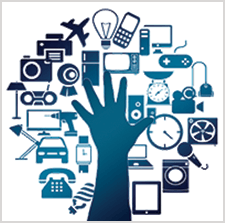Power Your Brand
January 7, 2019
We closed out 2018 with another record-breaking number of packaging awards and a record-breaking number of registrants for our “Labels + Packaging = Power for Your Brand” webinar. The basis of our webinar was to share how brands can utilize labels and packaging to set themselves apart on the shelf while providing additional value to consumers. One of the most important factors to consider when powering your brand is…consumers.
What are consumers looking for?
As brand owners, consumers are always at the forefront of your minds when you are looking to build your brand. The challenging part is that what consumers are looking for is constantly changing and challenging you. As you contemplate your brand, ask yourselves, what is important to consumers?
- Does your packaging drive a meaningful experience?
- Does your packaging bring your brand to life?
- Does your packaging provide the information consumers are looking for?
- Is sustainable packaging important to your consumers?
Does your packaging drive a meaningful experience?
Consumers are constantly looking for more from their packaging. A brand that provides value, a brand that reflects their values, and a brand that believes in their consumers. A unique example of this is LIFEWTR, according to their website: “LIFEWTR is a premium bottled water committed to advancing and showcasing sources of creativity.” LIFEWTR launched a new series of label artwork spotlighting three emerging artists every few months. I found this particular series pulling at my heart strings: #BringArtBackToSchools. As a mom, they were able to connect with me on another level, increasing my loyalty to the brand. LIFEWTR has created a unique strategy to power their brand, convey a message, and provide an experience around what they believe in – the power of art.
Does your packaging bring your brand to life?
There are a variety of ways to bring your packaging to life, but let’s focus on augmented reality — now that’s a way to literally bring your brand to life. One of my favorite examples in the marketplace is 19 Crimes wine. Bringing your label to life can be easily achieved with an augmented reality app. Once downloaded, all a consumer needs to do is hold their phone over the package and watch the label come to life, as demonstrated here: 19 Crimes wine.
I am not going to lie, the 19 Crimes Red Blend is a personal favorite of mine. This past summer, my parents came in town to visit, and I shared the AR experience with my father (a non-wine lover mind you), and boy was he impressed. Let’s fast forward to a few months later when he traveled to visit his brother on the east coast. Shortly after his arrival, he sent me a text with a photo of all five bottles of 19 Crimes wine. Augmented reality does more than providing an experience, but it can also upsell across the brand. My uncle and father weren’t satisfied with just one AR experience, they needed to see the entire brand.
If you download the “Living Wine Label” app, you can interact with seven additional wine brands. Augmented reality could intrigue consumers who might traditionally only spend $10 on a bottle of wine, to splurge and spend $18 to see what the AR experience will be.
Does your packaging provide the information consumers are looking for?
There are a few different ways that packaging can communicate vital information to your consumer. We always say that your label and packaging is a billboard for your brand, but sometimes there may not be enough room for the message that you are looking to share. We have the perfect fix for that – digital watermarks.
What is a digital watermark, you may ask?
Digital watermarking is an image embedded in the graphics of a label or package that is invisible to the naked eye. It’s one of the most effective and simple ways to engage with consumers, authenticate every individual unit, and improve your supply chain management. You are able to control the content that is delivered to your customers and help build greater brand loyalty. Utilizing a digital watermark can also help gain valuable consumer and purchasing behavior analytics from their interactions.
Shoppers with smartphones get real-time access to relevant content and have a better shopping experience. A perfect example is a Wegman’s label that we produce for stir-fry sauce. If a consumer is contemplating purchasing this item but needs an idea of what to make, they can scan the digital watermark on the label. The app will take them to the Wegman’s website with suggested recipes for that particular product. The best part is… the recipe can change throughout the life of the label to fit the season or special promotion.
A digital watermark is a tool to communicate bonus information such as recipes, coupons, or special blog articles. The supplemental information gives consumers what they are looking for, but the challenge of the information that is required to be on the packaging. How can you best communicate that information? Take a look at food packaging. You can find a wealth of information on nutritional facts, health benefits of the product, or even the accurate correct serving size in varying locations of the package. The Grocery Manufacturers Association implemented the “Facts Up Front” labeling because consumers were looking for a front-of-pack labeling system that could be widely adopted for busy consumers, especially parents, to make informed decisions when they shop. Nutrition facts and packaging can be overwhelming, and the facts up front methodology will summarize the important nutrition information in a clear, simple and easy-to-use format on the front of food and beverage packages to ease in consumers buying decisions.
Is sustainable packaging important to consumers?
It is important to continuously check the pulse of your target market to determine “does sustainable packaging matter to my consumers?” In 2018, the answer was a resounding “Yes!” We saw a lot of national brands making pledges or commitments (i.e. Kraft Heinz, Diageo, L’Oréal, or Nestle) stating that their brand will make their packaging 100% recyclable, reusable, or compostable. The year of declaration varies from brand to brand, as well as the details around the commitment, but it is important to realize that we are moving quickly in that direction.
One of the largest roadblocks to sustainable packaging can cost. Sustainable packaging typically does cost more than standard packaging. However, more brands implement sustainable packaging we would hope to see a decrease in the cost of some of the packaging options available.
The key is to push the conversation. Lean on suppliers to keep in front of new sustainability trends and sustainable packaging options.
The power behind labels and packaging has no limits. We’ve only touched the surface of what can be done. If you have further questions on the topics covered in our webinar or want to learn more, Let’s Talk.



